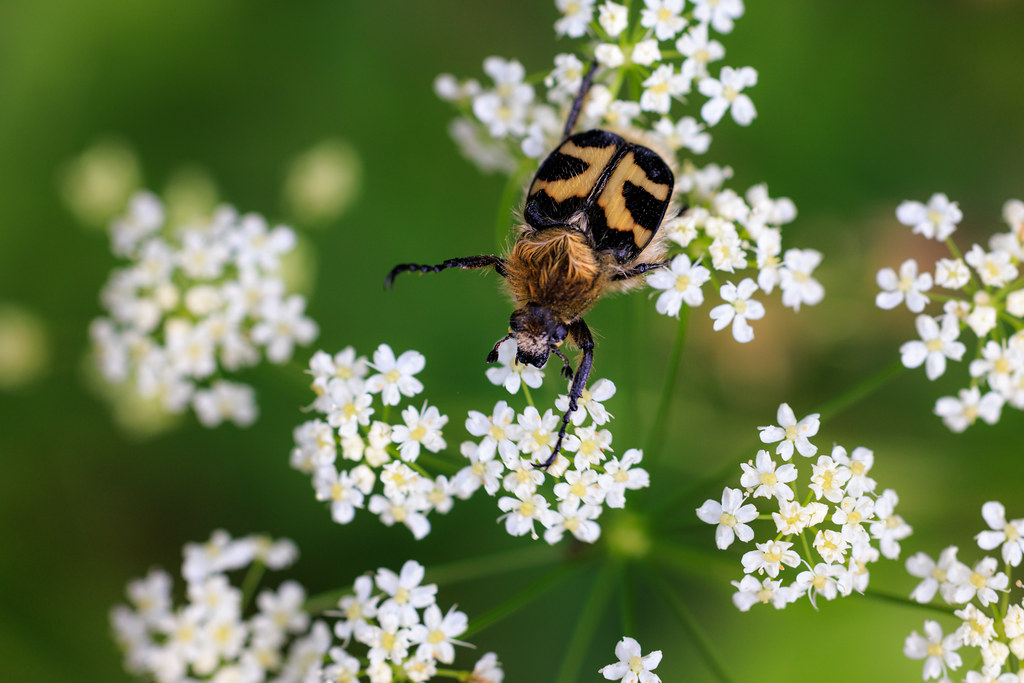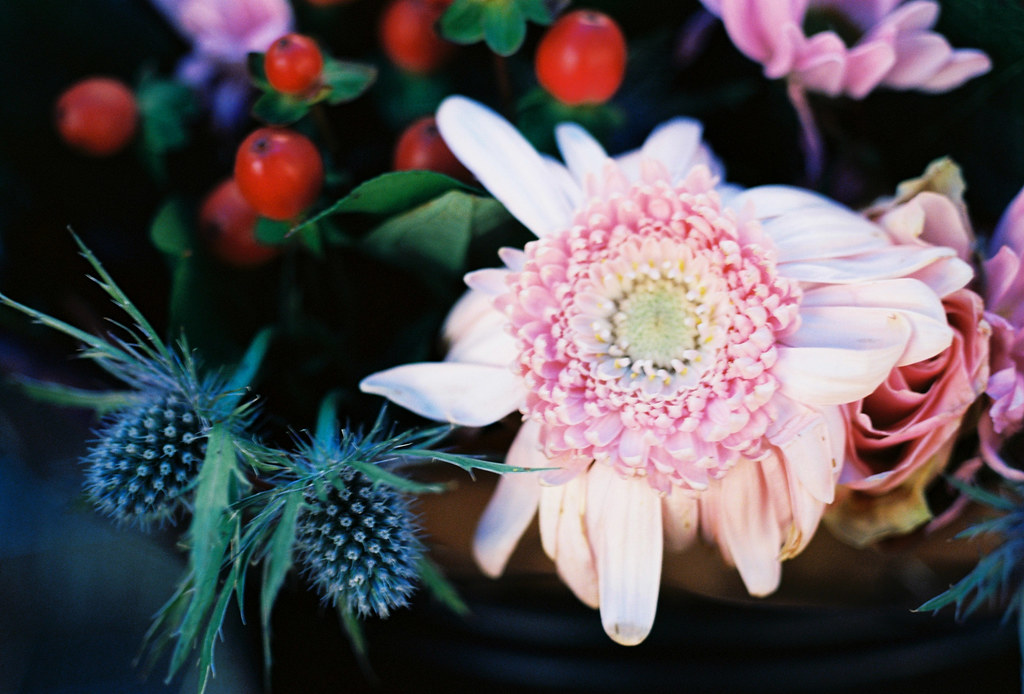#100 mm macro
Video
Trichius fasciatus, Plintsberg, July 15, 2023 by Ulf Bodin
Via Flickr:
CR522236.
#Summer#Sverige#Trichius fasciatus#Canon RF 100 mm f/2.8 L Macro IS USM#Bee beetle#Canon EOS R5#Macro#Skalbagge#Sweden#Outdoor#Dalarna#Insekt#Bandad humlebagge#Plintsberg#Leksand#Dalarnas län#flickr
0 notes
Video
How good could this have been ... by Michael Khan
Via Flickr:
... if I'd focused more accurately? I'll never know. Leica R5 (10060), made in 1990 Leitz Macro-Elmarit-R 60 mm Kodak Ektar 100 professional grade colour negative film Developed and scanned by www.meinfilmlab.de
#FILM#35 mm Film#ANALOG#manual focus lens#vintage film camera#vintage lens#Macro#It's a Leica!#Leica R5#Leitz Macro-Elmarit-R 60mm f/2.8#Kodak Ektar 100#www.meinfilmlab.de#German Cameras#flickr
0 notes
Note
What lenses and camera do you take photos with?
I love your photos, the photos of birds are as vivid as if you were observing them through binoculars.
Hi there,
And thank you! I just browsed your photos, they are wonderful.
For camera specifics, I will reuse an old answer, I hope you don’t mind :)
"My go-to camera, especially during summer, is a Canon Eos 80D. I also have a Canon 6D Mark II which I tend to use more during winter and dark/cloudy/rainy days. As for lenses, I use a zoom 100-400 mm (Canon EF 100-400mm f/4.5-5.6L IS II USM), but I also frequently use a 100mm f/2.8L Macro lens for flowers, plants and insects. These are cameras and lenses I’ve used many years, and I know them very well. As with family, I tend to argue with them from time to time (“focus!”, “no, it’s NOT too dark!”, “why don’t you learn to communicate like a normal person?!” etcetera), but I always love them no matter what."
I also use my iPhone from time to time, especially when I’m scouting an area or when I simply don’t have access to my system camera. I'm thinking of trying out old fashioned analogue cameras as well, but I haven't got around to that yet (not to mention that I can't afford it at the moment). Oh, and I remember my old Polaroid camera with much love, but that camera is long gone.
All the best!
39 notes
·
View notes
Text
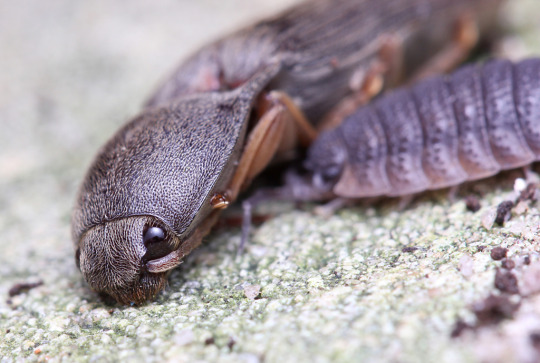
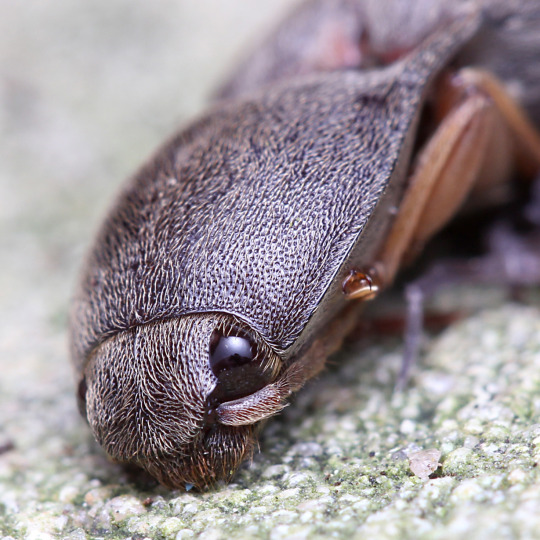
Click Beetle and a curious isopod.
I don't think they were even aware of each other. The click beetle was playing dead, and the isopod scuttled up and nuzzled it. Perhaps it thought crawling under the beetle would yield a dark crevice, and apparently considered this a success.
I think both are "hiding" with an endearing lack of skill or cogitation.
Canon 60D
Canon EF 100 mm f/2.8 USM macro
Extension tubes
Custom flash diffuser
#isopoda#crevicedwelling#beetles#macro#insects#macro photography#isopod#isopods#arthropods#nature photography#skydarcyedwards#photography
270 notes
·
View notes
Text
Book Binding Post
The video above is me walking you through the first bookbinding I did. Since a few people mentioned an interest in the initial cost of bookbinding fanfic, I made a list of what I used to start out. You can find most/all of these things on Amazon. If you'd rather not support Amazon, then Hollander's is a great place to find your necessities. You can also find most of this stuff at any local crafting store. As I am in the US, all prices are in USD.
Printer - It doesn't need to be fancy. Unless you're including fanart, a black-and-white one will do. I'm pretty sure you can get a basic printer for less than $100.
Microsoft Word - I wanted to use Macros built for Word, and those don't work with other text editors like Open Office or Google Docs. Macros are little programs that will do repetitive tasks to format the raw text so it can be converted into a book. If you don't have it, you can pay for a subscription for about $7 per month.
Paper - You could use cheap copy paper, but I bought 24 lb cotton linen paper. 500 sheets were about $25. You'll have 4 pages of your book printed on one sheet (two on the front, two on the back), so a 200,000-word fic that is nearly 500 pages will use about 125 sheets.
Bone Folder - This is just a tool used to neatly crease your signatures. Signatures are sets of 5-10 pages that fold into a booklet and then are sewn together. I was very weirded out by the idea of having an actual bone tool (vegetarian, here) so I found a folder that was plastic. You may have something suitable around your house that would serve this purpose if you don't want to buy one. You don't want to use anything that will scratch/tear your pages, though. Cost is about $5.
Awl and Punch Cradle - An awl is a bit like an ice pick. It is used to punch holes into the creases of your signatures so you can sew them together. These holes need to be evenly spaced, and I do 8 total along the spine. To make this easier for myself, I also bought a punch cradle. This is a little plastic tool your unfolded signature sits in while you lay a guide along the crease and punch through the guide with the awl. My punch cradle came with the awl, thread, and needle. All of it was about $25.
Waxed Linen Thread - If you can't find waxed, then you can get a small cube of beeswax and run your thread along it before you begin sewing. Cost is about $5.
Needle - I prefer a large curved metal needle. Sometimes these will come with a punch cradle or thread. If not, they are fairly inexpensive--maybe a dollar or two.
PVA Adhesive with Applicator - This is the glue you'll need to secure the spine and connect the text block (all the signatures sewn together) with the cover. You want to use something suitable for bookbinding that has a neutral pH. You should also get a brush or silicone applicator. Cost is about $15 for the glue and applicator.
Mull (bookbinding cloth) - This is like a rough cheesecloth used to repair and/or bind books. It's going to help reinforce your spine. A large sheet of this runs about $15 and will last you through many binds.
Headband/Endbands - While I have heard you can make your own, I just bought a box of them with assorted colors. It's fairly inexpensive at $10 and will last for a very long time. These are the little pieces of cloth at the top and bottom of the text block, visible only if you look down at the top of the book.
Cardstock/Endpapers - Endpapers are the thicker pages that connect the cover of the book to the text block. When you open a book, it's the first thing you see and is often decorative. Some bookbinders print their own custom ones using blank cardstock, but I bought an assorted pack of decorative pages for about $15. Each page is a 12-inch square and I used two to bind one book--one for the front and matching one for the back.
Chipboard - This is used for your case or cover. I found a pack of 24 sheets that are 12-inch squares and 2.54 mm thick for $25. One square worked to bind one book.
Book Cloth/Leather - This is what you glue to your chipboard to make the cover of the book. I used book cloth I found online. A 40" x 16" piece was $15 and should be enough to handle three to four books.
Exacto/OLFA Knife - This is a retractable and very sharp blade that will help you cut your endpapers, chipboard, and book cloth. Cost is about $5.
Ruler - You'll be doing quite a bit of measuring once you finish your signature block and begin the steps to connect it with the case. You'll also find it handy to use as a guide when cutting with your knife. Cost is pretty cheap--maybe a couple dollars.
I would consider the things listed above as necessities to make things look good and somewhat professional. You could certainly get by without a couple of them (bone folder, punch cradle, headbands), but it will make the process more difficult.
There are some additional things I bought that have helped me greatly. You don't need these things, but they will make your binding experience more pleasant and much easier.
Book Press - It's two pieces of wood that squish your text block (and eventually book) together during the process of binding. After you've folded your signatures, you're going to be using the book press to squish the signatures together after each step, and then leave it that way until you're ready to work on the book again. You could use two large books or boards lying around your home with some cheap clamps. That would work just as well. If you want a book press, they're about $40, but can go up higher.
Craft Mat - You can find self-healing ones online or in craft stores. This is just a large mat to work on. It will protect your table/floor from the blade you'll be using to cut materials. You could use scrap material you already have, but you want it to be sturdy; corrugated cardboard boxes aren't a good substitute because they are too squishy. Craft mats are about $10.
T Spacers and Corner Mitres - These are very helpful when making your case. They allow you to line up the front and back cover with the spine while leaving appropriate space for the hinge and also cut the corners of the book cloth so you can create clean edges when gluing the cloth to the board. I didn't buy these until after I bound my first book, and I regret not getting them immediately because my case would have looked so much better with them. You can get a set of various sizes for $20.
Cricut or Silhouette Machine - I don't have one of these, but I've been considering it. They can be quite expensive, but many bookbinders use them to create artwork for the covers and spine of their books. An alternative would be a laminated dust jacket or you could stencil/paint the title. These machines cost anywhere between $120 and $800. From my minimal research, I think you'd need to spend about $200-300 to get one that would do what you need for cover art purposes.
Subscriptions for Artwork - Many people use a Canva subscription for all design/artwork. If you want to do custom endpapers and a dust jacket, then this will come in handy. There is a free trial, but the monthly subscription will run you $15.
So, how much are we talking? Tools that you only have to buy once will cost you about $50 (bare minimum) to $120 (if you throw in the extras to make life easier). Of course, that doesn't include printer/ink and the Cricut. The materials will set you back about $125, but you'll get several books out of them. I could bind about 4 books without buying anything else. Then I'd need to spend about $60 on more supplies like paper, glue, and book cloth to make another 4. My best guess is that each book uses about $15-20 worth of supplies. So, if we aren't counting your time, it's about what you'd pay for a hardcover. But we're talking about fanfic that isn't commercially available, so we're gonna say $20 for a one-of-a-kind book that holds a story you love is priceless. Right?
If you want a tutorial to get started, then I highly recommend Haunna's tutorial on TikTok. It is easy to follow and what I used.
15 notes
·
View notes
Text
New Camera 📸
Camera Type: Fujifilm JX50 (500 SERIES)
Released - 2012? Can't find the exact date but according to DP review, it was announced in 2012.

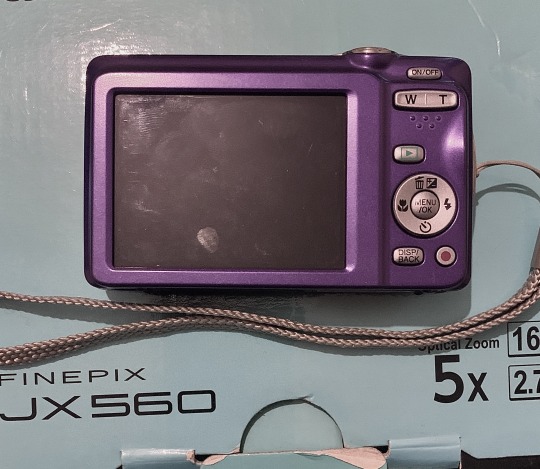
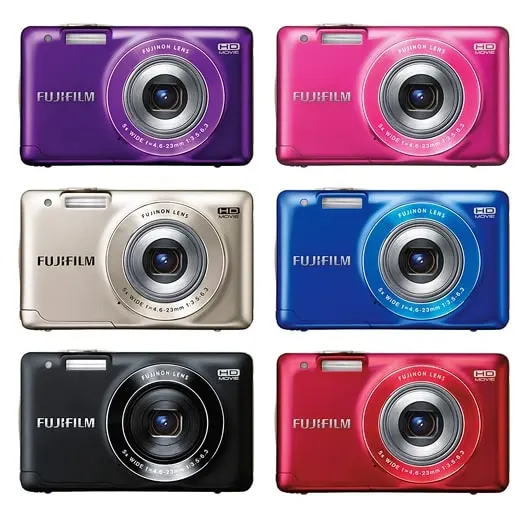
Brief Specs:
16 Megapixels
Focal Length - 26-130 mm
Optix Zoom - 5x
Max Aperture - F3.5-6.3
Sensor type - CCD
Sensor Size - 1/2.3" (6.17 x 4.55 mm)
ISO - 100-3200 (with boost)
Max Rez - 4608-3216
Entry 1:
~Intended to be kept as a keepsake and for practice~
I just recently graduated as an MFA Photography Student at Ulster University, now that I'm free to practice whichever way I want, I want to resume practicing street photography and macro. I bought this camera both as a y2k trend keepsake but also for fun practice as I do not have any DSLRs on hand anymore atm. Personally, I enjoy finding 'old' or nostalgic items I've never used before to see how far I can push my style preference on more limited cameras.
And due to the y2k trend, this seemed the perfect way to experiment. I was too little most of the time to own a compact camera and didn't see the point in owning one since we always have our cells on hand, but I've been feeling nostalgic this past year for tech I never got to try in the past and wanted to push myself outside my comfort zone for a piece of equipment that's easy to have on hand at all times or at a moment's notice without looking too obvious. My camera doesn't technically count as early y2k tech but it's vintage to me lol. And I wanted to recreate a similar vibe for me.
I'm honestly surprised I managed to find one at such a decent price (£43 ebay) at the peak of this trend. And for a solid colour camera no less. It came near mint-condition, with all of its battery chargers and a newish battery. I'm new to this but I still happened to notice that in the West, compact cameras typically come in standard black, silver, and reds. I'm in the U.K. atm, so perhaps that's why it was easier to come across a solid purple one. WAY prettier colours are available in Japan 😭. I want to keep collecting unique colour models but it's such a pain to find sellers who sell the camera with all of its battery equipment.
Out For A Test!
These are all shot in Belfast city centre.




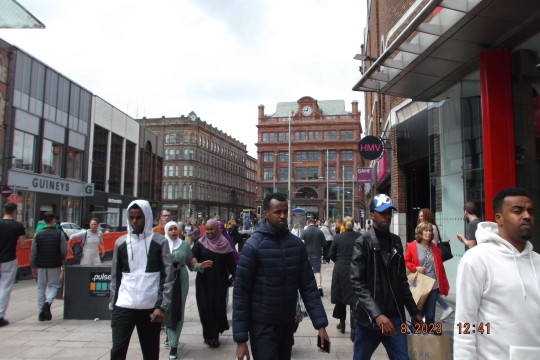
Macro Mode Test
I need to try again once I get a better hang of this camera and when I'm not blocking people traffic: nothing beats a proper macro lens but even still, this'll easily do in a pinch. Shame the camera doesn't shoot RAW :(


Videos that inspired me to go collect y2k tech, it's also worth noting that the trend is also noted for taking off possibly due to film getting very expensive to buy for both hobbyists and professionals and some photographers are trying to collect digicams that create unique looks similar to that of film so keep that in mind when researching:
youtube
youtube
youtube
#digicam#digital camera#y2k aesthetic#y2k nostalgia#film photography#streetphotography#macrophotography#nostalgia#belfast#uk photography#Youtube
7 notes
·
View notes
Text
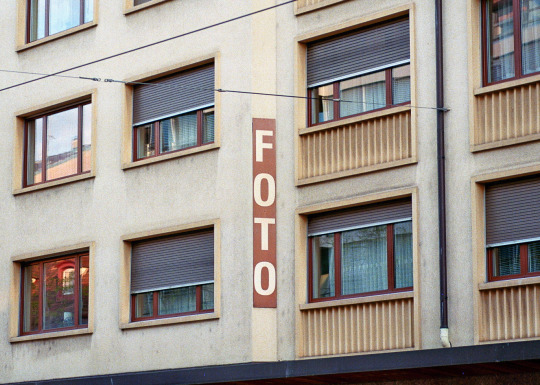


Unfortunately (for my wallet) recently got the analog bug, bought a Nikon FE off ebay… Luckily I own exactly 1 F Mount lens still capable of full manual operation, the Tokina ATX Pro 100 mm F2.8 Macro. Paired with Kodak Ultramax 400 filmstock, this is how the first outing turned out (Part 1)
7 notes
·
View notes
Text
Moon Orchid and Crocus Spring
Spring has sprung and so have our first flowers. Photos taken with my new Canon RF 100 mm macro lens
Spring has sprung and so have our first flowers.
Moon Orchids
What do you think of these photos of Phalaenopsis amabilis?
Moon Orchid
Moon orchid is the national flower of Indonesia but it is native to Island Southeast Asia, New Guinea, and Australia.
This photo was taken with a Canon RF 24-240 mm lens using focal length 83 mm @ ISO 125, 1/125 s at f/6.3
Moon Orchid
This photo was taken…

View On WordPress
2 notes
·
View notes
Text
3 Advice For Taking the Best Product Photos!
Product photography is crucial in marketing and communication, especially in the e-commerce industry. A product must be shot to make it appear appealing to the buyer if it is to appeal to them. Photographs of products are frequently used in advertising. Products like apparel, cosmetics, cuisine, footwear, jewelry, etc. Advertising is a type of communication used to urge potential customers to take action.

It is ineffective just to hold the product in front of a white background and take a picture. The visual's aesthetic sense is what gives it significance. A simple application of a few sound principles may transform a plain image into a work of art. The best method to understand product photography is using the three L's.
Location, lensing, and illumination are to blame. Let's examine each of the three factors.
Lighting: To improve the appearance of the goods, produce a clean, soft light next to them. One can make umbrella lights or softies that have good diffusion for key and fill. Another option is to plug in a flashlight. Instead of pleasant golden light, the feeling of equilibrium is the key concept.
Lensing: It is a crucial component. If you stand near the image and click, the product appears considerably worse than it does from a distance. Grab a respectable long lens, then take a step back to take the ideal photo. If you have a Nikon, 150 mm macro or 70-80 mm should work perfectly. 100 mm macro is a fantastic choice with a Canon DSLR. Whether you fired your mobile phone, beer can, or shoes, this would be more than appropriate. Additionally, a tripod allows you to shoot steady long-exposure photos. The widest aperture on your camera will let the least amount of light into the lens.
Location: If the shoot takes place in a studio, you must design the backdrop or set, make a light map, and occasionally even do a test shoot to ensure everything is in order. You must inspect the venue and work with the art director to choose the backgrounds and other aspects for an outside shoot. The size of the setting will also have an impact on the backdrop's size and the available options. If models are used, planning requires a completely different idea and environment. A photographer should have an excellent sense of photography, use the available space appropriately, and show the full object.
So keep in mind these three pointers when considering doing product photography. Alternatively, you may think about asking a professional Ecommerce product photographer for such advice.
5 notes
·
View notes
Text
Oppo K11 Price In Bangladesh & General Information
Oppo K11 price in Bangladesh is BDT 30,000 Tk only. The smartphone was launched on August 01, 2023, in model no PJC110.
Network
The device has a Hybrid Dual SIM (Nano-SIM, Dual stand-by) and supports 2G, 3G, 4G, and 5G network connection. The device's network speed is HSPA, LTE (CA), 5G.
Body & Design
The device's dimensions are 162.7 x 75.5 x 8.2 mm (6.41 x 2.97 x 0.32 in), weighing 184 g (6.49 oz). The device is made of Glass front, Plastic frame, and Plastic back with Moonshadow Gray and Glacier Blue color options.
Display
The Oppo K11 has a 6.7-inch, 108.4 cm2 AMOLED display with a resolution of 1080 x 2400 Pixels and an 88.2% screen-to-body ratio. The device's pixel density is 393 PPI with a 20:9 Aspect Ratio.
The brightness of the device is 500 nits (typical), 1100 nits (peak) with 1B colors, 120Hz, HDR10+ support. The K11 mobile display is protected by Corning Gorilla Glass 5, and you will also get multitouch support.
Hardware & Software
The K11 has a Qualcomm Snapdragon 782G (6 nm) octa-core chipset with Adreno 642L and runs with Android 13-based custom software ColorOS 13.1. The smartphone has a UFS 3.1 storage system and LPDDR4X type RAM, and the device comes with 8GB+256GB, 12GB+256GB, and 12GB+512GB storage options.
Camera
The Oppo K11 has a triple camera setup in the back. The cameras are
50 MP, f/1.8, 24mm (wide), 1/1.56", 1.0µm, multi-directional PDAF, OIS
8 MP, f/2.2, 112˚ (ultrawide), 1/4.0", 1.12µm
2 MP, f/2.4, (macro).
The main camera features LED flash, HDR, panorama with 4K@30fps, 1080p@30/60/120fps, and gyro-EIS video recording. For taking a selfie, you will get 16 MP, f/2.4, 24mm (wide), 1.0µm sensors with HDR and 1080p@30fps, and gyro-EIS video recording.
Multimedia & Connectivity
In the multimedia section Of Oppo K11, you will get a stereo speakers system with 24-bit/192kHz Hi-Res Audio. This device has no FM radio or 3.5mm headphone jack.
In the connectivity options, you will get the latest version of Wi-Fi 802.11 a/b/g/n/ac/6, dual-band, Wi-Fi Direct, Bluetooth version 5.2, A2DP, LE, aptX HD, GPS, GLONASS, GALILEO, BDS, QZSS and USB Type-C 2.0, OTG support with Fingerprint, Accelerometer, Gyro, Proximity, Compass sensors.
Battery
The Oppo K11 has a non-removable 5000 mAh lithium polymer battery with a 100W wired charger, and the Oppo company claims that the device can be charged 100% in 26 min.
0 notes
Text
OnePlus 12R Genshin Impact é anunciado com design customizado
Por Vinicius Torres Oliveira

Edição Genshin Impact do OnePlus 12R estreia com interface customizada, acessórios exclusivos, nova opção de cor e muito mais
Após o lançamento do OnePlus 12R recentemente no mercado global, a fabricante chinesa agora aposta em uma versão especial do dispositivo dedicada aos fãs do jogo Genshin Impact com interface customizada, acessórios exclusivos, nova cor e mais.
O novo OnePlus 12R Genshin Impact Edition chegará em nova cor Electro Violet com elementos inspirados na personagem Keqing.
Características premium como o acabamento fosco no vidro traseiro, a moldura em alumínio e chave lateral de alerta serão mantidos do OnePlus 12R original.
Novidades exclusivas também serão encontras na interface OxygenOS baseada no Android 14, que vai incluir um novo pacote de ícones inspirado no elemento Electro de Keqing, animações originais de ativação, carregamento e leitor biométrico, além de sons customizados com a voz da Keqing.
Em parceria com a Trinity Engine da OnePlus, o dispositivo promete oferecer ainda mais fluidez ao Genshin Impact com HyperHDR, até 3 horas de jogabilidade com quadros estáveis a 59,5 fps, alta velocidade de abertura do jogo e carregamento mais veloz.
Para o hardware, a OnePlus mantém quase todos os elementos do OnePlus 12R na edição Genshin Impact, incluindo o processador Snapdragon 8 Gen 2 com 16 GB de memória RAM e bateria de 5.500 mAh com recarga de 100W por fio.
A tela de 6,78 polegadas mantém a tecnologia AMOLED e taxa de atualização até 120 Hz, com resolução 1.5K (1264 x 2780 pixels).
A memória interna tem 256 GB no padrão UFS 3.1, que não é tão rápido ou eficiente quanto o mais atual UFS 4.0 mas já dará conta de uma boa experiência.
Nas câmeras, temos uma lente ultrawide com sensor de 8 MP, sensor principal de 50 MP com estabilização óptica (OIS), lente macro de 2 MP e câmera frontal de 16 MP.
A caixa com acabamento exclusivo é recheada de acessórios feitos exclusivamente para os fãs, incluindo:
OnePlus 12R Genshin Impact Edition
Capa protetora customizada da Keqing
Carregador "Glinted Lightning"d e 100W
Cabo customizado na cor roxa
Chave de ejeção do SIM "Lightning Stiletto"
Suporte de acrílico para o smartphone
Suporte ornamentado de acrílico
Figurinhas customizadas
Bottom metálico
Preço e disponibilidade
O OnePlus 12R Genshin Impact Edition chega em breve em países selecionados e tem preço sugerido de £ 649 (cerca de R$ 4.060) no Reino Unido e mais agressivos ₹ 49.999 (~R$ 3.000) na Índia.
OnePlus 12R Genshin Impact Edition: ficha técnica
Tela: AMOLED de 6,78 polegadas, resolução 1.5K, taxa variável de até 120 Hz
Processador: Qualcomm Snapdragon 8 Gen 2
Memória RAM: 16 GB LPDDR5X
Armazenamento: 256 GB UFS 3.1
Câmera traseira: 50 MP (principal, Sony IMX890, f/1.8, OIS) + 8 MP (ultrawide) + 2 MP (macro)
Câmera frontal: 16 MP
Bateria: 5.500 mAh com carregamento SuperVOOC de 100 W
Extras: 5G, Wi-Fi 7, Bluetooth 5.3, NFC, USB-C 2.0, certificação IP65
Dimensões: 163,3 x 75,3 x 8,8 mm
Peso: 207 gramas
Cores disponíveis: Electro Violet
Sistema operacional: Android 14, sob a OxygenOS 14.0
0 notes
Note
Hallå! Jag har älskat din blogg lika mycket som @herpsandbirds blogg, och jag har älskat dina fantastiska bilder och jag vill veta vilken kamera du använder för att få så otroligt tydliga bilder, jag tycker att det är riktigt coolt att du kan få bilder på mesen fåglar utan någon form av kameraskakning eller oskärpa för att de tittar sig omkring så snabbt eller flyger iväg. Jag skulle stötta dig med Ko-fi men jag har inte så mycket av mina egna pengar precis. Tack för att du lyssnade på mig som frågade dig om din kamera! Glad fågelskådning och natur! (eller vad det heter.) Ursäkta för eventuella grammatiska fel eftersom jag har använt google translate från engelska.
Hi there! Thank you for your kind words and for using Google to translate your comments to Swedish. I'll answer you in English though, as Google can be a bit untrustworthy from time to time (as is my English, but never mind).
Please know that I don't expect anyone to support me via Ko-fi, so don't feel bad about it. I'm just glad you are enjoying my pictures. As for which camera I use, I re-use my standard answer, as this is a question I get quite often. Here goes:
My go-to camera, especially during summer, is a Canon Eos 80D. I also have a Canon 6D Mark II which I tend to use more during winter and dark/cloudy/rainy days. As for lenses, I use a zoom 100-400 mm (Canon EF 100-400mm f/4.5-5.6L IS II USM), but I also frequently use a 100mm f/2.8L Macro lens for flowers, plants and insects. These are cameras and lenses I’ve used many years, and I know them very well. As with family, I tend to argue with them from time to time (“focus!”, “no, it’s NOT too dark!”, “why don’t you learn to communicate like a normal person?!” etcetera), but I always love them no matter what.
I also use my iPhone from time to time, especially when I’m scouting an area or when I simply don’t have access to my system camera. I’m thinking of trying out old fashioned analogue cameras as well, but I haven’t got around to that yet (not to mention that I can’t afford it at the moment). Oh, and I remember my first camera, an old Polaroid, with much love, but that camera is long gone.
So there you go. "IS" in the zoom lens name above stands for "image stabilisation", which paired with shutter speed settings makes the bird pictures sharp. But you should know that I take many, many pictures that are far from sharp - pictures you will never see...
Thanks again for contacting me. Have a wonderful day!
32 notes
·
View notes
Text
General Rules
• Only positive, fun, kind, etc, etc, posts are allowed here. This is strictly a positivity blog.
• Both anonymous and non-anonymous asks or submissions are allowed.
• Namedropping is allowed provided you are comfortable with speaking the user's name. While this is a positivity blog, and the blog is a safe area from drama, it is understood that namedropping isn't comfortable for everyone. Do what makes you most comfortable. :)
• Any various hate included but not limited to: racism, homophobia, transphobia, LGBTQ+phobia, or general hatred towards a user to anon on this blog will not be tolerated. This is a positive space, and asks or replies that are hate filled will be blocked and dealt with accordingly.
• Talk of clickers, macros, scripts, etc, etc is not allowed on this blog.
• Please know that the opinions of others don't reflect the opinions of me or everyone else here. Everyone has differencing opinions, and that's okay. :)
• It is 100% fine to ask questions about the site to be answered here. Don't be shy or feel embarrassed about asking for help- at least one of us will be happy to answer you.
• For those who want to speak to the Mod, just call me MM. :) <3
• These rules may be updated as needed as time goes on.
0 notes
Text
Buy OPPO Reno 8 Pro 5G 256GB/8GB from Spectronic Australia

Spectronic Australia is the most trusted online Ecommerce store offering OPPO smartphones. OPPO Reno 8 Pro comes with a triple primary camera set up with 50 MP(wide)+8MP(Ultawide)+2MP(macro). Place your order for the latest OPPO Reno 8 Pro 5G 256GB/8GB smartphone at its best price.
Below are the specifications of the OPPO Reno 8 Pro smartphone:
Body: 161.2 x 74.2 x 7.3 mm (6.35 x 2.92 x 0.29 in) dimensions
Weight: 183 g (6.46 oz)
Display: AMOLED, 1B colors, 120Hz, HDR10+, 500 nits (typ), 800 nits (HBM), 950 nits (peak)
Resolution: 1080 x 2412 pixels, 20:9 ratio (~394 ppi density)
OS: Android 12, ColorOS 12.1
📷Triple Main Camera: 50 MP, f/1.8, 23mm (wide), 1/1.56″, 1.0µm, multi-directional PDAF ,8 MP, f/2.2, 16mm, 112˚ (ultrawide), 1/4.0″, 1.12µm , 2 MP, f/2.4, (macro)
📷Selfie Camera: 32 MP, f/2.4, 22mm (wide), 1/2.74″, 0.8µm, AF
🔋Battery: Li-Po 4500 mAh, non-removable, 80W wired, 1-45% in 10 min, 1-100% in 31 min (advertised)
Buy now from us to get the OPPO Reno 8 smartphone at its best price
#oppo phones australia#oppo phones in australia#buy oppo mobile phone online australia#buy oppo phone online
0 notes
Text
Ya boy now has basic camera skills and access to a Canon EOS Mark IV + a 100 mm macro lens and 👀
1 note
·
View note
